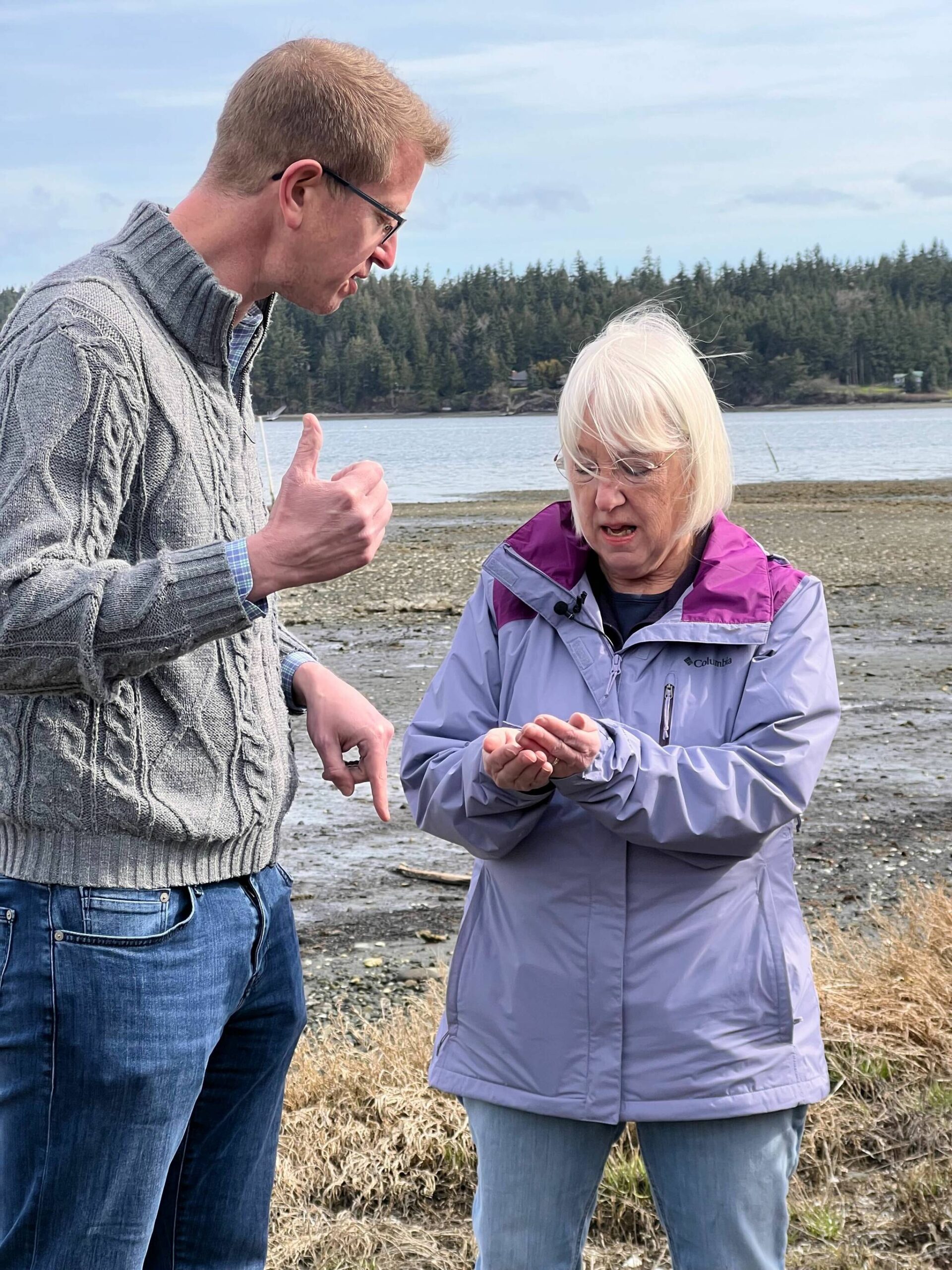U.S. Sen. Patty Murray and Congressman Derek Kilmer were joined by representatives of the Jamestown S’Klallam Tribe last week to hunt down and trap the invasive European Green Crab species in south Sequim Bay.
The duo was unsuccessful in catching a crab on April 5, but both leaders voiced support for removing the species that pose a danger to regional marine environments.
“The European green crab poses a serious threat to the entire Puget Sound ecosystem — threatening local shellfish populations, hurting salmon and orca recovery efforts, and threatening to undermine our tribal treaty obligations,” said Murray, D-Seattle.
“I’m here today with Congressman Kilmer to hear directly from the leaders on the ground fighting back against this invasive species.”
Murray also said she is working to secure federal resources and better overall coordination in future spending bills to support state and local efforts to protect regional ecosystems from invasive species like the green crabs.
“Unfortunately, we are becoming all too familiar with the threat that European Green Crabs pose to our environment,” said Kilmer, D-Gig Harbor.
“We have a responsibility to eliminate this invasive species so that we can protect our native species, support our shellfish farmers, and uphold our treaty responsibilities for Washington’s tribes. I’m going to keep pushing for the federal government to be a strong partner in that effort.”
In January 2022, Gov. Jay Inslee issued an emergency declaration and immediate action to address the growing green crab population.
“European Green crabs are a non-native crab that can out-compete our native species,” said Hilton Turnball, habitat biologist with Jamestown S’Klallam Tribe.
Turnball noted that the species was accidentally introduced to the West Coast in the late 1980s and first appeared in Sequim in 2017.
“When they occupy a habitat, they can take over pretty quickly and eat their way up the food chain, from microscopic organisms to other crabs and fish if they can catch them,” Turnball said.
Green crabs are pelagic, which means they inhabit the water columns of coasts, open oceans and lakes and essentially float on the currents and tides.
“We have been fairly well protected here in the North Olympic Peninsula,” Turnball said.
“We have had smaller population outbreaks, whereas [at] coastal sites, since there is nothing to flush the larva out, they get into the estuaries really easily.”
In 2022, Jamestown S’Klallam Tribe laid out 855 traps in Sequim Bay and 577 traps in Discovery Bay.
Turnbull said only 21 crabs in total have been caught in the Sequim Bay location over the past five years; two of the crabs were in 2022. A total of 76 crabs were caught in Discovery Bay in 2022.
The traps are placed in the water at low tide and checked at the following low tide. The crabs are then recorded for the state Department of Fish and Wildlife and then properly removed.
“Responding to this really requires a dedicated effort that we weren’t prepared for,” Turnball said. “We were not prepared to meet the demand of having to trap these animals and get them out.
“It takes staff time and financial resources to stay on top of, and we are thankful for our partnerships with the Department of Fish and Wildlife, SEA Grant and other organizations as well as the leadership of Sen. Murray and Rep. Kilmer.”



